Properly installed wall insulation makes your home more comfortable year-round. In the winter, your home will be warmer with more pleasant humidity levels and , in the summer, your air conditioner will work more efficiently.
The best time to insulate is during construction or remodeling when you have clear access to the wall framing and gaps around windows and doors. Fill the cavities completely and seal all potential leaks. Do it right! Even small gaps can reduce energy efficiency by 25 percent. Note that fiberglass can irritate skin, eyes and lungs. Wear a long-sleeved shirt, long pants, safety goggles and a two-strap dust-particle mask rated for insulation.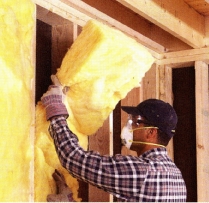
Push batts into place and completely fill cavity, leaving no voids or gaps. Batts should be cut slightly longer and wider than the space to ensure a tight fit.
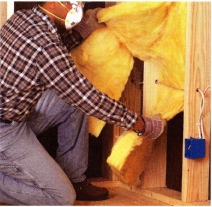
Split batts to fit around both sides of electrical wiring. Pull fiberglass batts apart at the desired thickness, press into place and rejoin.
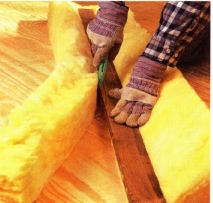
Cut batts for installation by pressing a straightedge down on the batt at the desired width and use it to guide the utility knife. Remember to cut batts slightly oversize.
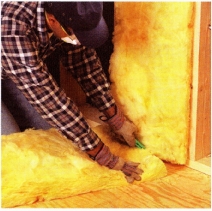
Cut batts in place by positioning the top and cutting to length against the bottom plate. Cut slightly long to ensure a tight fit.
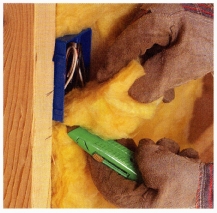
Split and cut to fit tightly behind electrical boxes. Slide the back half behind the box. Then closely cut the front half to fit tightly around the box.
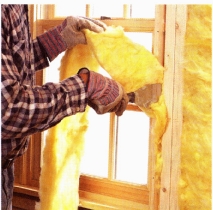
Insulate around windows and doors by snugly tucking fiberglass into the back of the cavity, and then filling the remaining space with low-expansion foam.
Vapor Retarders
Vapor retarders, often referred to as vapor barriers, limit the movement of warm, moist air into the wall cavity, where it can lessen the effectiveness of insulation and can promote mold growth.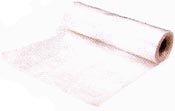
Plastic sheeting. Use 6-mil plastic sheeting to cover unfaced fiberglass batts. Overlap and tape seams to reduce air leakage. Fire-retardant and reinforced varieties are available.

Kraft-faced paper. Kraft-faced paper batts allow you to secure batts in individual stud cavities using a staple gun. It must be covered for fire-prevention purposes and isn’t as effective or seamless as plastic sheeting.
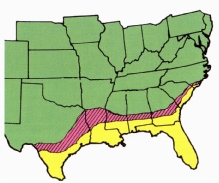
Vapor barrier zones . The green states and all areas north and west are cold climate zones that require an interior vapor barrier. Pink indicates fringe climates, and yellow indicates humid climates where an interior vapor barrier isn't needed.
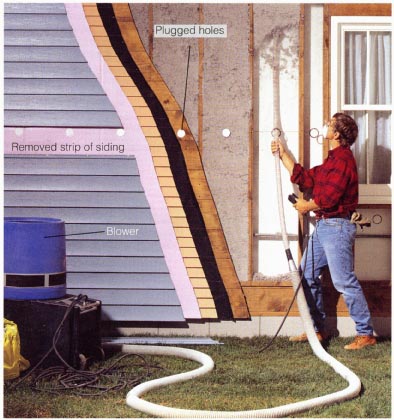
Blown-in Insulation
If your older house lacks wall insulation, you can add it by blowing it in. The basic procedure is to drill holes in walls, blow in insulation and plug the holes. Because of the mess, it’s often better to work from outside. Some pros remove a single strip of siding and blow the top half of the stud cavity (it will usually stay put) followed by the bottom half. Others will drill two or more sets of holes. If your home is brick, you’ll have to work inside. Stucco is hard to patch, so consider an inside job there, too.
Cellulose paper treated with a fire retardant is a common loose- fill insulation. It’s sold at lumber- yards and home centers, which will usually rent or lend you a blowing machine. When blown into walls at the proper density, cellulose can reduce air leakage as much as 33 percent. Make sure the product you buy is code-approved.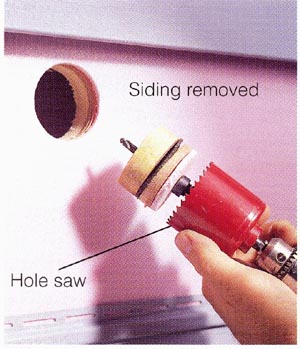
Drill access holes. Using a hole saw, cut holes in each stud cavity. Some pros remove a single strip of siding in the middle of each wall, blow the top half of the cavity first and then blow the bottom half. Others bore holes at the top and midpoints and blow insulation downward.
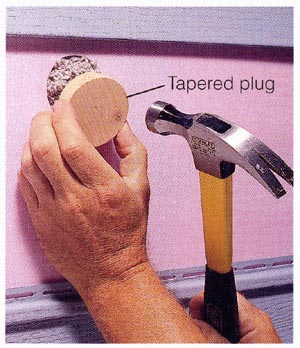
Plug holes. Tapered plugs are available in standard sizes to match your hole saw. If possible, choose cork or plastic plugs; they fit and seal better than wood. Tap in plugs until they’re flush with the siding or wall sheathing. Caulk them in place for a tight seal.
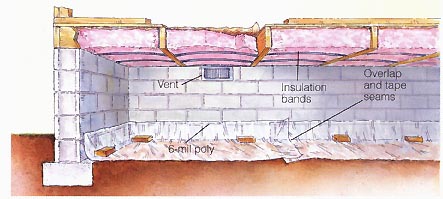
Crawl Spaces
To warm your feet, you can wear thicker socks, but a more permanent solution is to insulate crawl spaces. The standard procedure is to insulate ceilings of unheated crawl spaces arid walls of heated crawl spaces. (Check with your building inspector about venting.) If you’re using Kraft-faced batts in cold climates, install them with the paper up against the floorboards. Cut each batt oversize for a tight fit; then secure it in place using friction-fit insulation bands or staple wire mesh (chicken wire) or house wrap to the bottom of joists.
To ensure the effectiveness of insulation and prevent mold growth, keep it dry. Ground moisture is the main source of humidity in crawl spaces, so cover dirt floors with 6-mil plastic sheeting. Over lap generously and tape seams; hold edges down with bricks, long boards or other heavy objects.